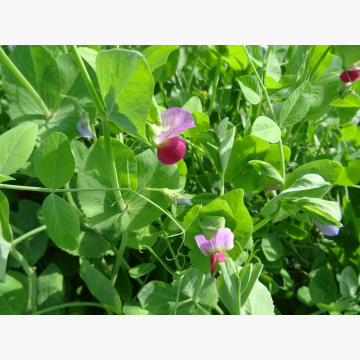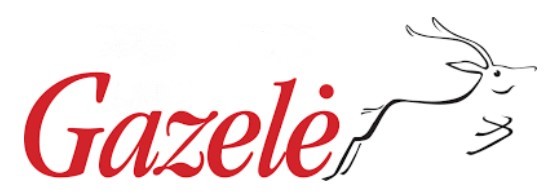- Home
- Seeds
- Fodder crops
- Fodder pea
- Fodder pea ARVIKA (ORG) LT-EKO-001
Category: Fodder crops
FOR CONSULTATIONS APPLY TO:
Commercial director
Lina Smalskienė
tel. +370 618 02 551
e-mail linak@agrolitpa.lt
Sales manager
Tautvydas Kliučininkas
tel. +370 681 35 093
e-mail tautvydask@agrolitpa.lt
Sales manager
Eglė Petkevičienė
tel. +370 626 95 458
e-mail eglep@agrolitpa.lt
Sales manager
Kotryna Nakrošytė
tel.: +370 601 39 282
e-mail kotryna@agrolitpa.lt
Fodder pea ARVIKA (ORG) LT-EKO-001
Pisum sativum L.
Produced in Lithuania
A late full-leaf pea, good dual-purpose cover or forage crop
- High yielding
- Very tall plants
- Rapid spring growth
- Good forage quality
- Lavender flowers
- Small seed size
- Excellent protein source
- Highly palatable
- Usually mixed with oats, barley, or triticale and are excellent source of high protein forage
- High yields
- Tall plants
- Rapid spring growth
- Covers the soil surface quickly
- Sown in spring, for green fodder is ready in 60 days
- Stem – long
- Leafy
- High resistance to lodging
- Very good resistance to rust and other diseases
- Early sowing can be affected by foliar diseases
- Flowering – moderately late
- Flowers – red-purple (lavender), grains – coloured
- Late ripening
- 1000 grains weight – 171 g (small, it means lower sowing costs)
- High protein content
- Good feed quality, good digestibility
- Suitable for green fodder, hay, green fertilizer
- Suitable for mixtures with summer and winter cereals (oats, barley, triticale)
- If sown with small grain legumes, cut the forage when the grain is in the bud stage, otherwise – cut at the flowering stage
- Sown early
- Easy to grow for grains
- Grows well in cool weather
- Does not tolerate waterlogged soils
- Accumulates nitrogen, good pre-crop
- Pea for forage is sown in early spring
- Pea for green manure is sown at the end of summer
- Tall plants suppress weeds, fix nitrogen, and improve the soil
The varietal parameters may differ from those indicated here when the testing circumstances differ from quondam
Recommended sowing rate when growing for feed or green manure: 50-80 kg/ha, when growing in mixtures
UAB „Agrolitpa“
Keravos sreet. 17, Kerava,
LT-38 131 Panevėžys district, LITHUANIA
Enterprise's code 168598128
VAT code LT685981219
Tel. +370 615 11 315
E. mail info@agrolitpa.lt
Keravos sreet. 17, Kerava,
LT-38 131 Panevėžys district, LITHUANIA
Enterprise's code 168598128
VAT code LT685981219
Tel. +370 615 11 315
E. mail info@agrolitpa.lt




.JPG)

